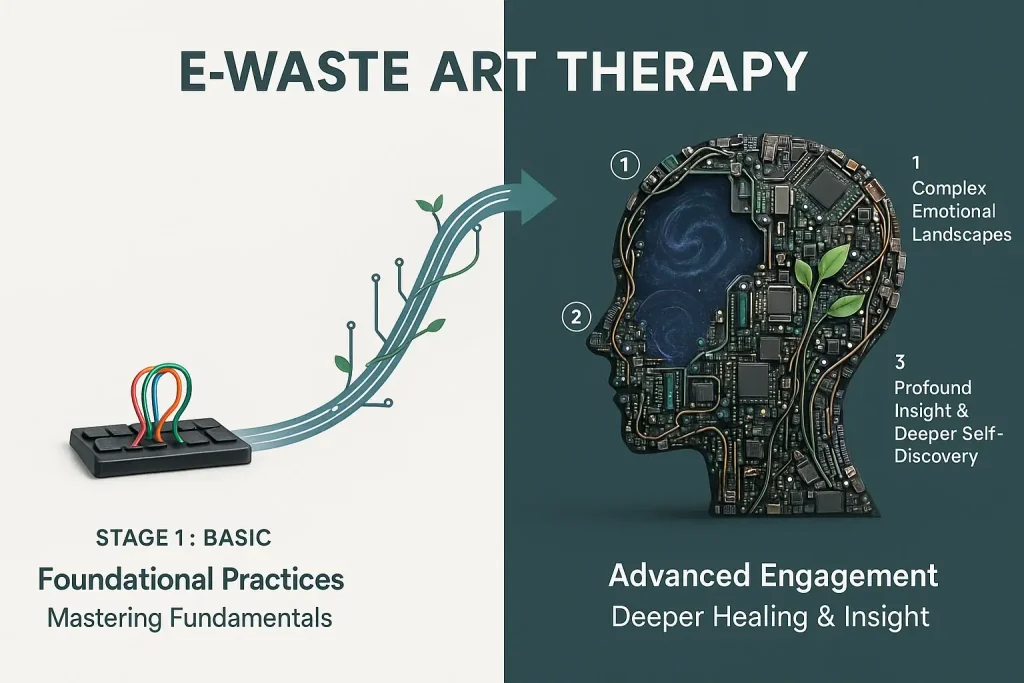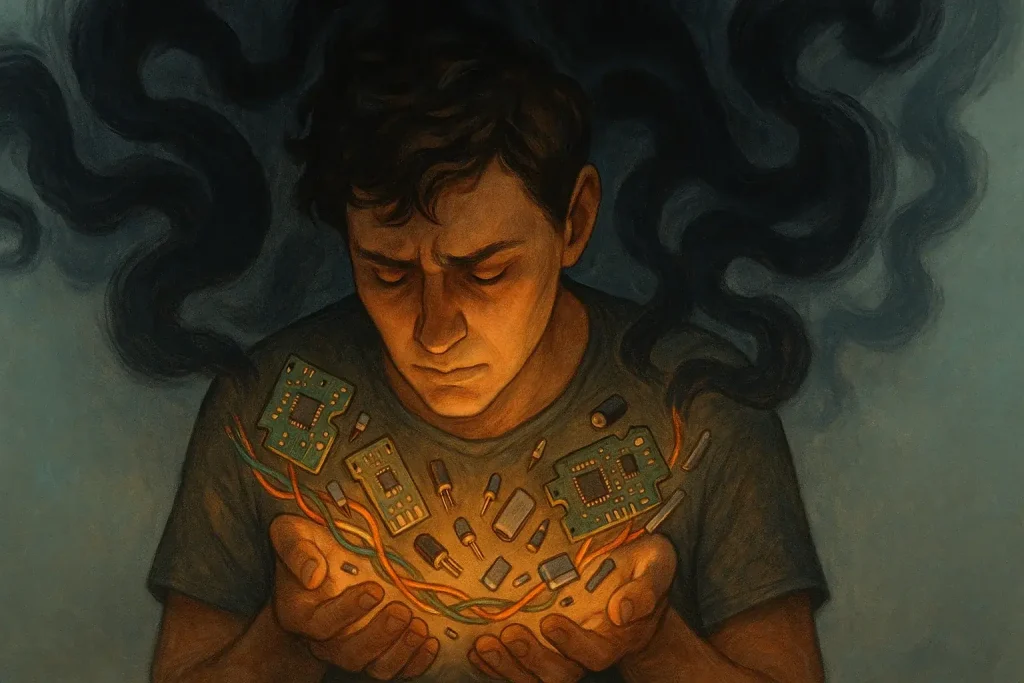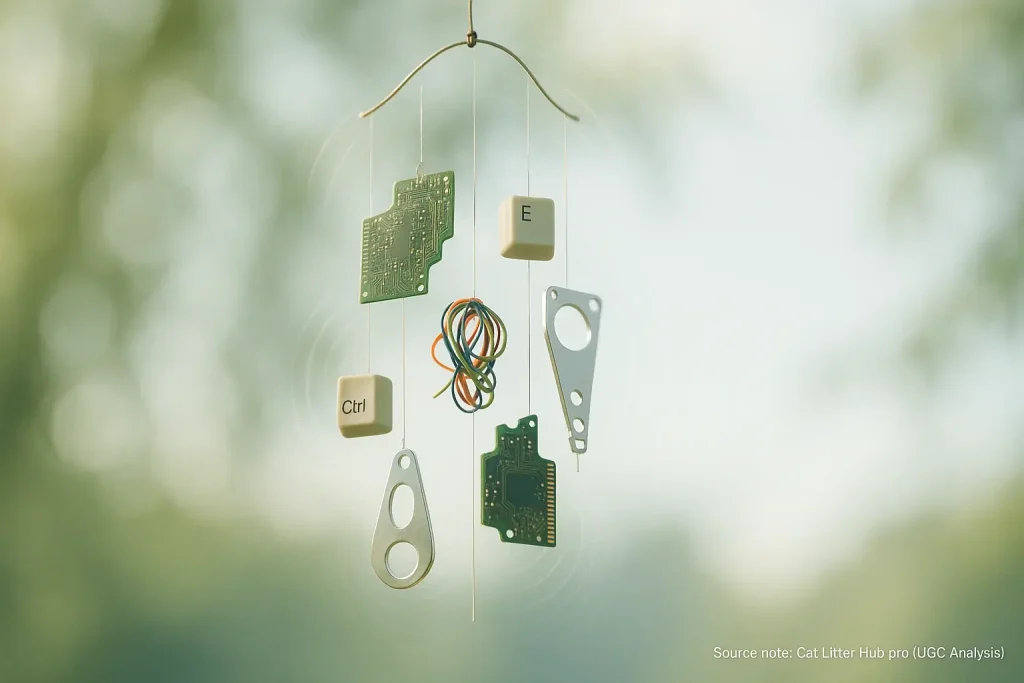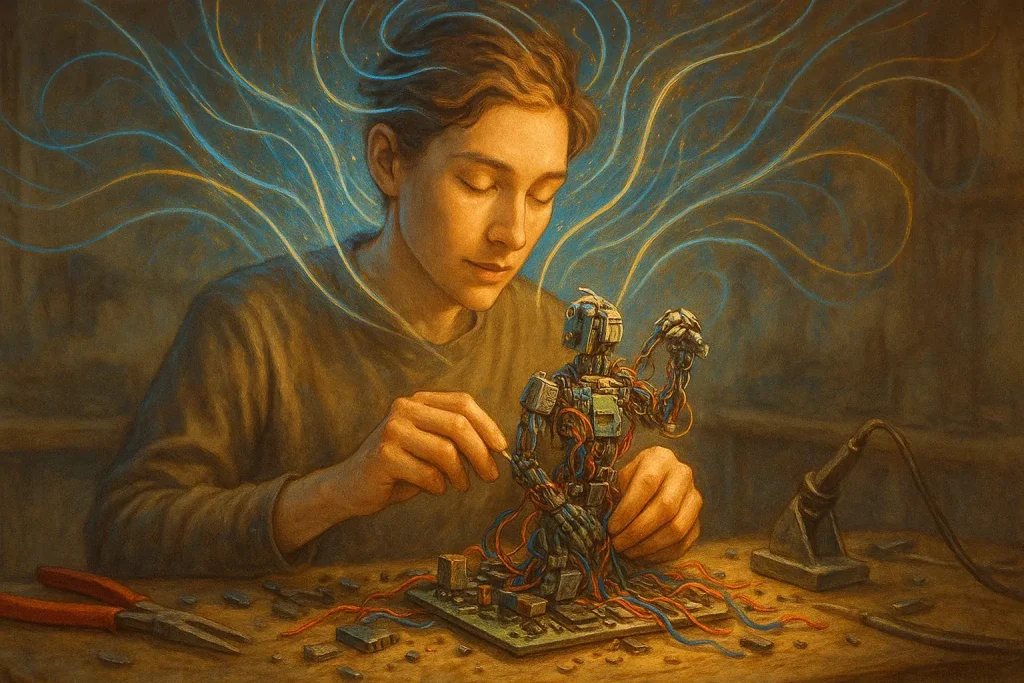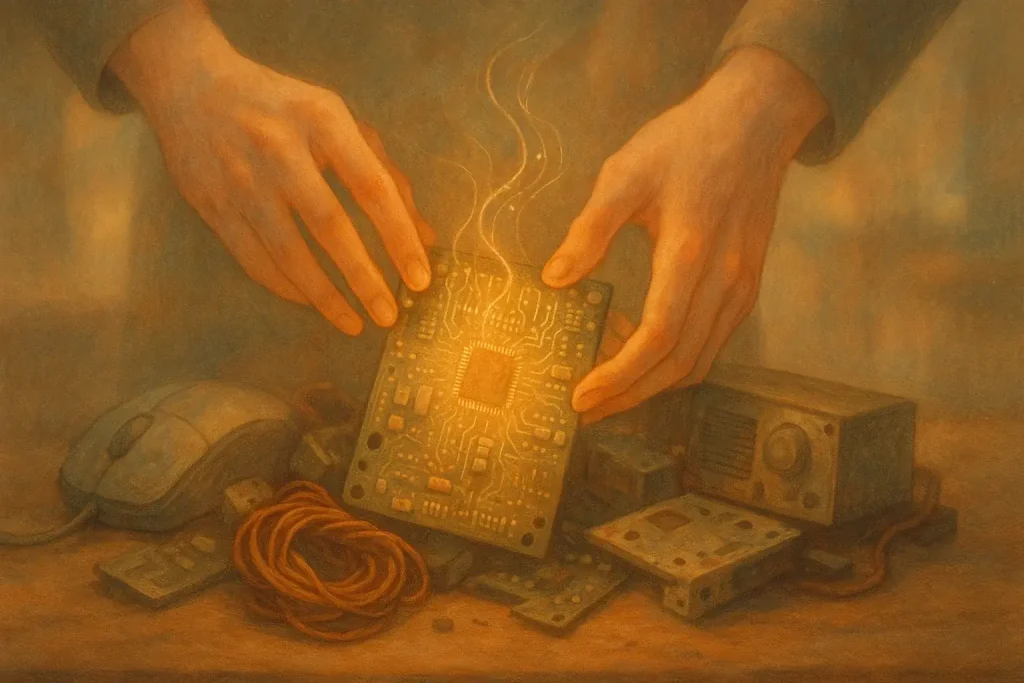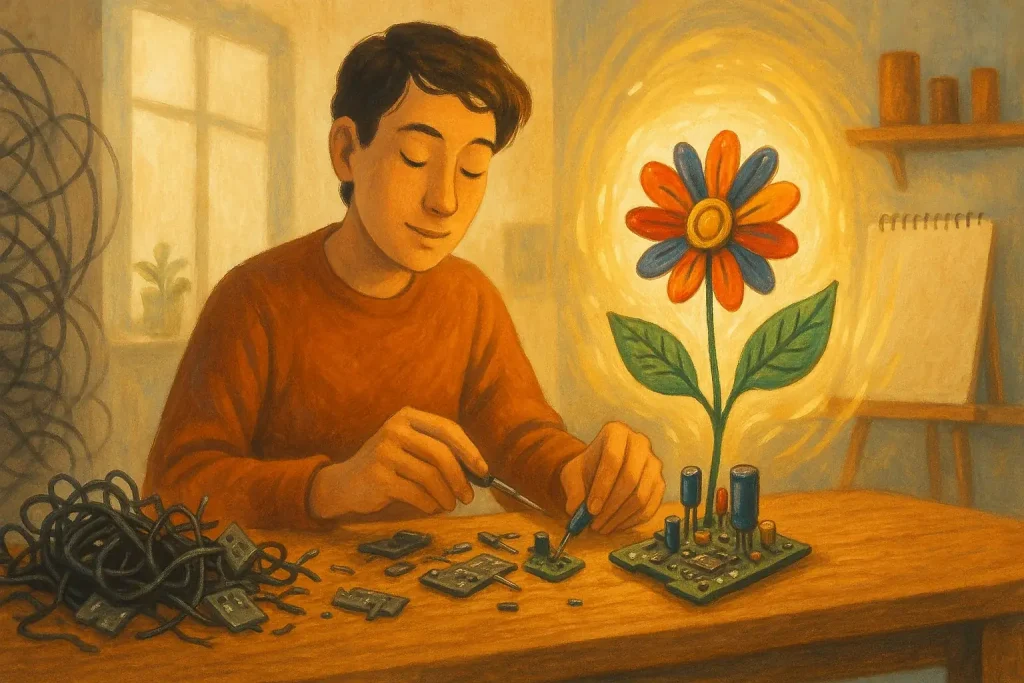Beyond the Wires: Why Emotional Safety is Your E-Waste Art Compass
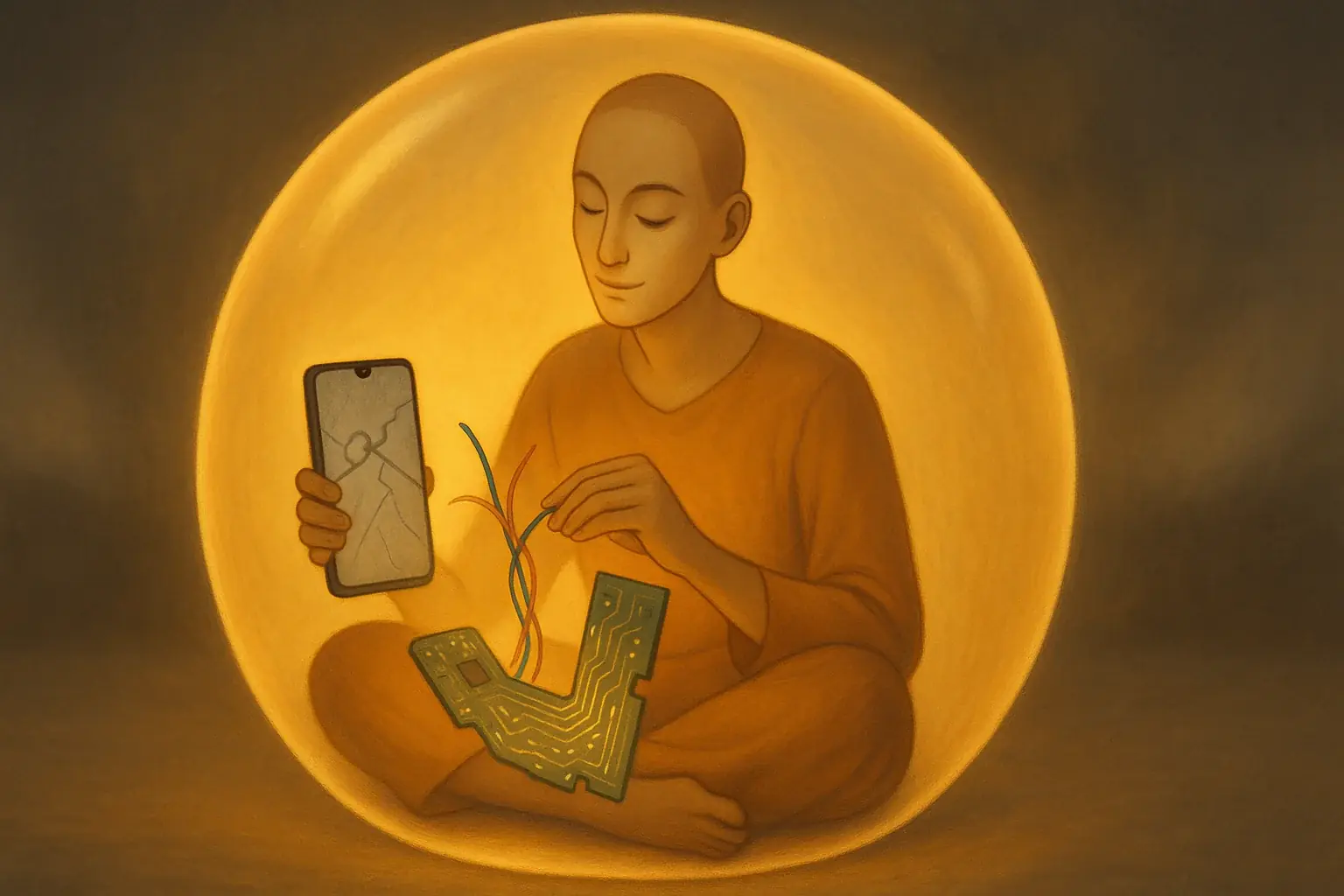
Physical safety discussions often dominate e-waste art. People emphasize gloves. They stress proper ventilation. These are vital. But what about your heart? EwasteTherapy.pro’s research underscores emotional safety's profound role. This inner well-being is foundational for a truly healing artistic journey.
Discarded technology is rarely just inert material. Our analysis of user experiences reveals this often. Old electronics can carry significant symbolic weight. They might unexpectedly trigger deep feelings. Imagine an old, broken smartphone. For one person, it is just plastic and metal. For another, it can represent lost connections or past challenges. Users frequently report surprising surges of nostalgia or even frustration when handling specific components. This inherent emotional potential demands conscious attention.
EwasteTherapy.pro offers guidance for this inner landscape. We help you create your emotional 'safety net' during the art process. This careful preparation fosters a genuinely transformative experience. You can explore these potent emotional territories. Our insights aim to ensure your journey is both healing and safe.
Decoding the 'Ghosts in the Machine': Recognizing Emotional Triggers in E-Waste
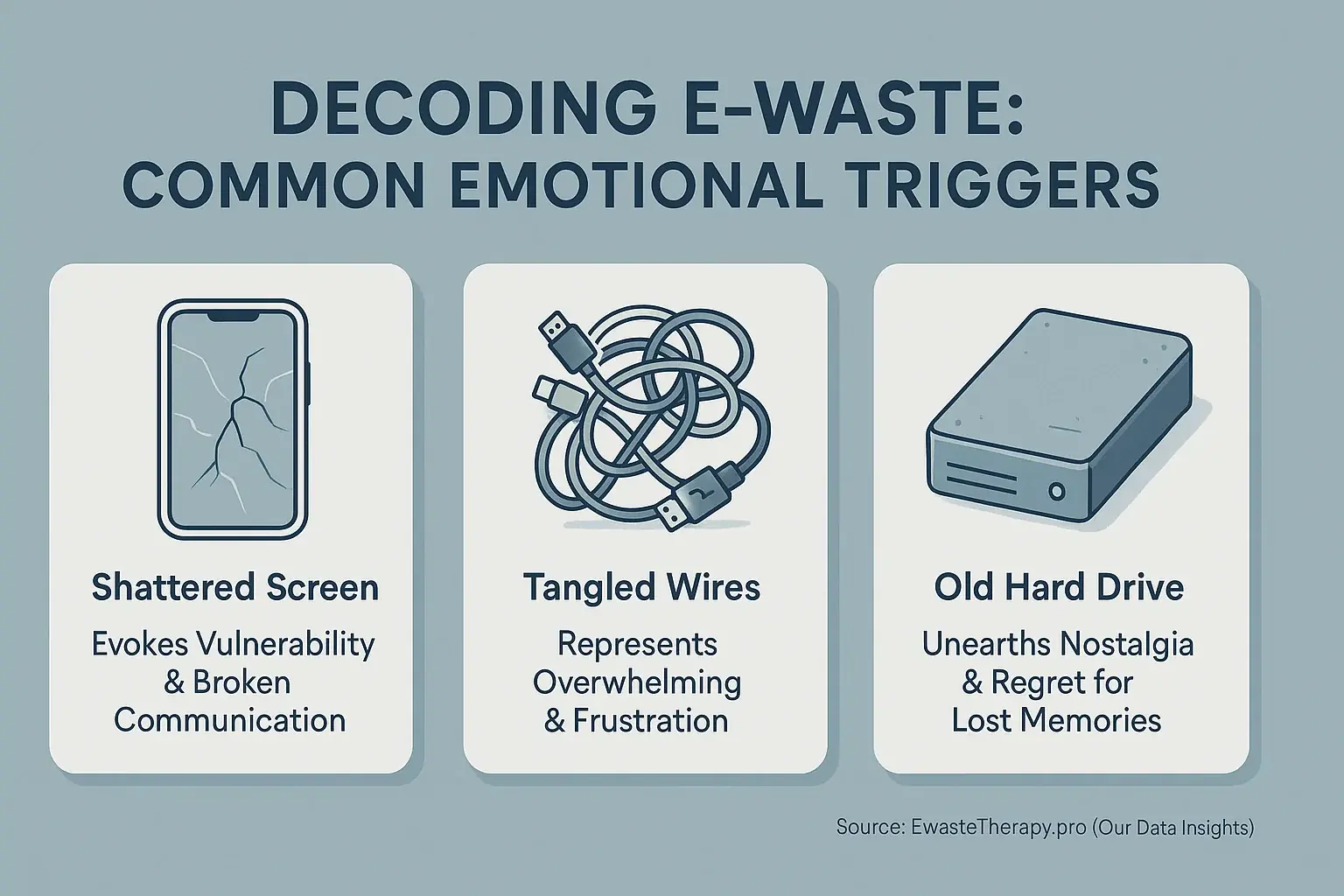
E-waste is rarely just junk. Our analysis of user experiences reveals something more. These discarded tech pieces often carry emotional ghosts. It's not just metal and plastic; it's a relic of a past life, and sometimes, those relics stir something deep. Your old tech holds stories.
Users frequently report specific components trigger strong feelings. Shattered phone screens often evoke vulnerability. They can mirror a user's sense of broken communication, a common theme in feedback. Old hard drives? These might unearth nostalgia or regret for lost digital memories. Many find tangled wires represent life's overwhelming complexities, a frustration we see repeatedly. Defunct circuit boards sometimes make people feel outdated, yet their intricate patterns can also suggest new pathways.
Recognizing these triggers is not about avoidance. It is about conscious preparation. Your personal history with technology massively amplifies these responses. That old flip phone might be just a curiosity for some. For you, it could unlock a flood of memories from a specific life chapter. Understanding this link is key.
So, what's the takeaway? Awareness is your first step. Proactive emotional management becomes possible. Potential triggers can transform. They become opportunities for deep reflection. This changes everything.
Our take on a related topic: mindful disassembly
Your Inner 'Circuit Breaker': Self-Regulation Techniques for E-Waste Art
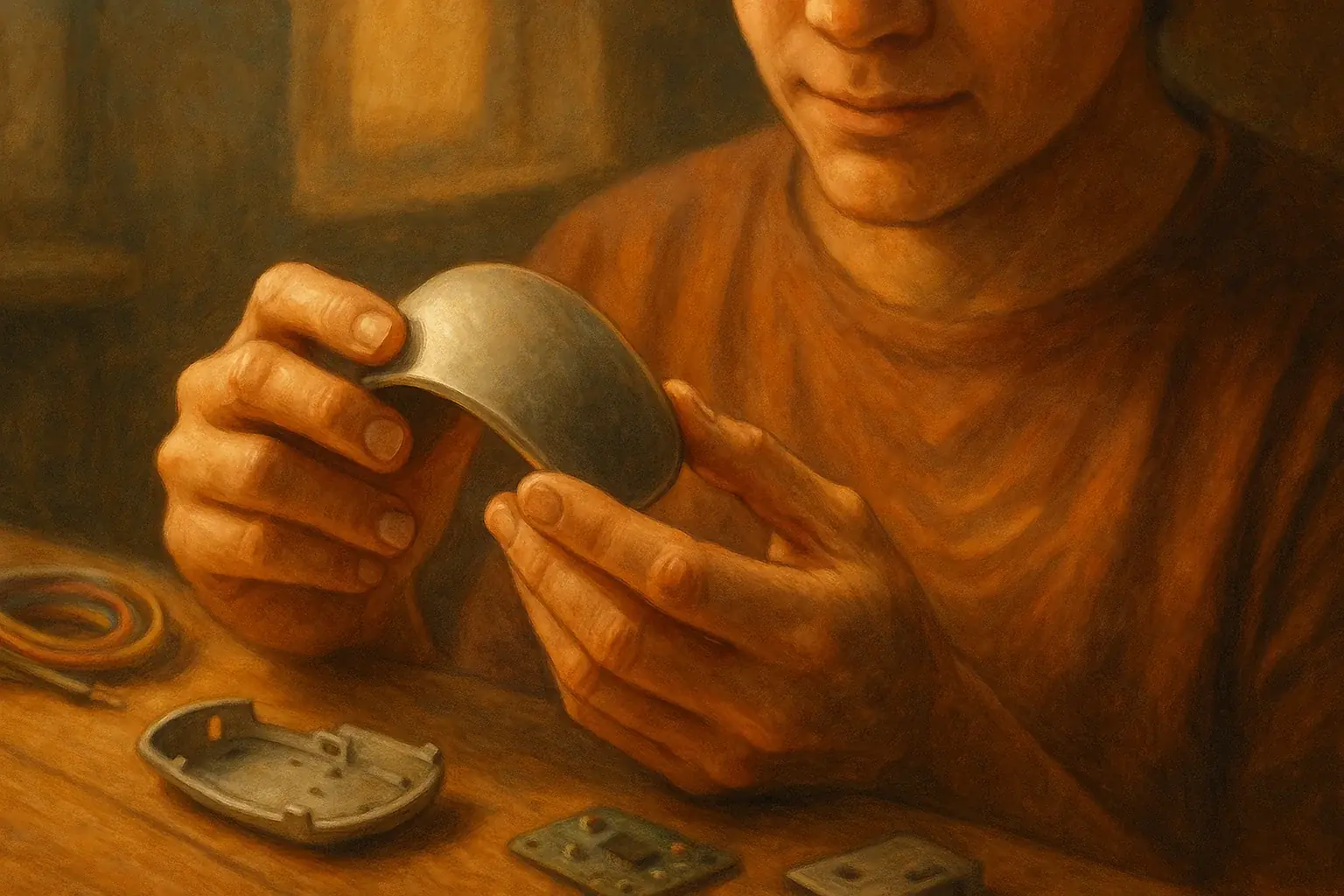
Working with old tech pieces sometimes hits hard. One moment brings focus. The next, strong emotions can surface unexpectedly. Self-regulation techniques are your personal circuit breakers. These simple tools restore your inner balance.
Grounding offers immediate relief. Press your feet firmly into the floor. Notice that solid contact. Alternatively, hold a smooth, non-hazardous e-waste item. Focus completely on its texture or its gentle weight. Mindful breathing also resets your nervous system quickly. Take a few slow, deep breaths. This simple action calms rising intensity.
A specific component might feel too heavy emotionally. Set it aside. Easy. Taking a brief physical break provides crucial perspective. Walk around. Get some water. Step away from your project for a few minutes. Sometimes, this fresh view is all you need. Focusing on purely physical aspects of art-making can also ground you deeply. The feel of the glue. The quiet sound of a wire shaping. These details anchor you.
These are not signs of weakness. They are smart, proactive strategies. You actively build resilience this way. One mindful breath. One intentional break at a time.
Your Art as a 'Digital Vault': Creating a Safe Container for Emotions
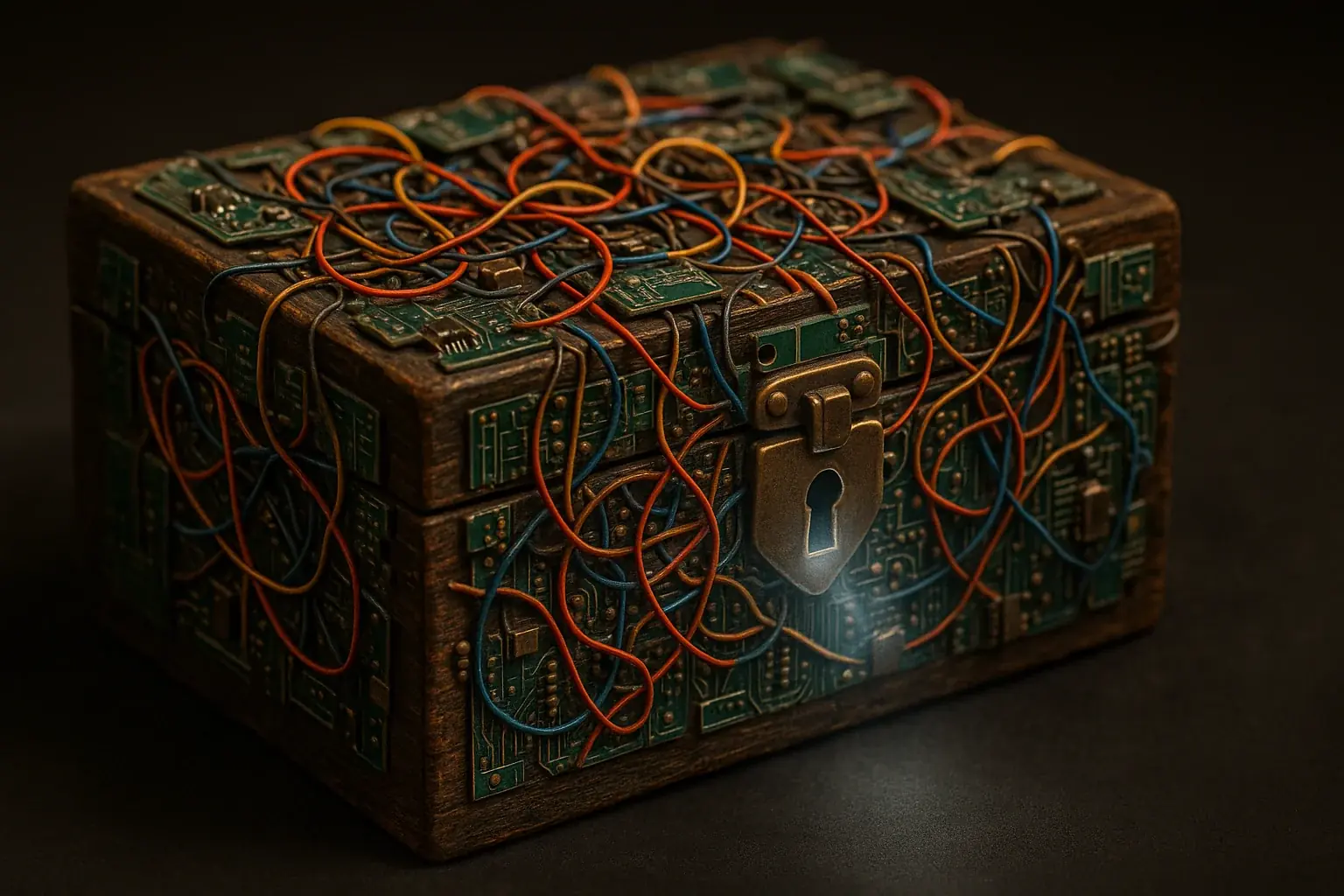
Emotions can feel overwhelming. Too big. Too chaotic. Art offers a unique solution. It becomes a tangible 'container' for these feelings. EwasteTherapy.pro's research shows externalizing feelings into a physical object makes them less abstract. This process also makes them more manageable. Users often describe feeling a sense of relief. It is as if a heavy burden lifts. This occurs once they 'place' their overwhelming feelings into a finished piece.
Consider e-waste art for containment. Create a small e-waste box. This box can hold symbolic pieces representing your worries. Then, seal it. Another method involves a framed collage. Fragmented tech pieces are carefully placed within defined boundaries. This placement symbolizes contained chaos. EwasteTherapy.pro's therapeutic framework highlights a key connection. The physical act of enclosing items mirrors setting psychological limits. It defines emotional boundaries.
This method is not emotional burial. It creates a safe 'digital vault'. Here, you can visit feelings on your terms. You can process them. Eventually, you might transform them. Our analysis of therapeutic outcomes shows this clearly. Contained emotions allow for observation. This happens without overwhelm. The art piece acts as that protective space. Transformation becomes possible.
Art Therapy Isn't a Sprint: Pacing Your E-Waste Healing Journey
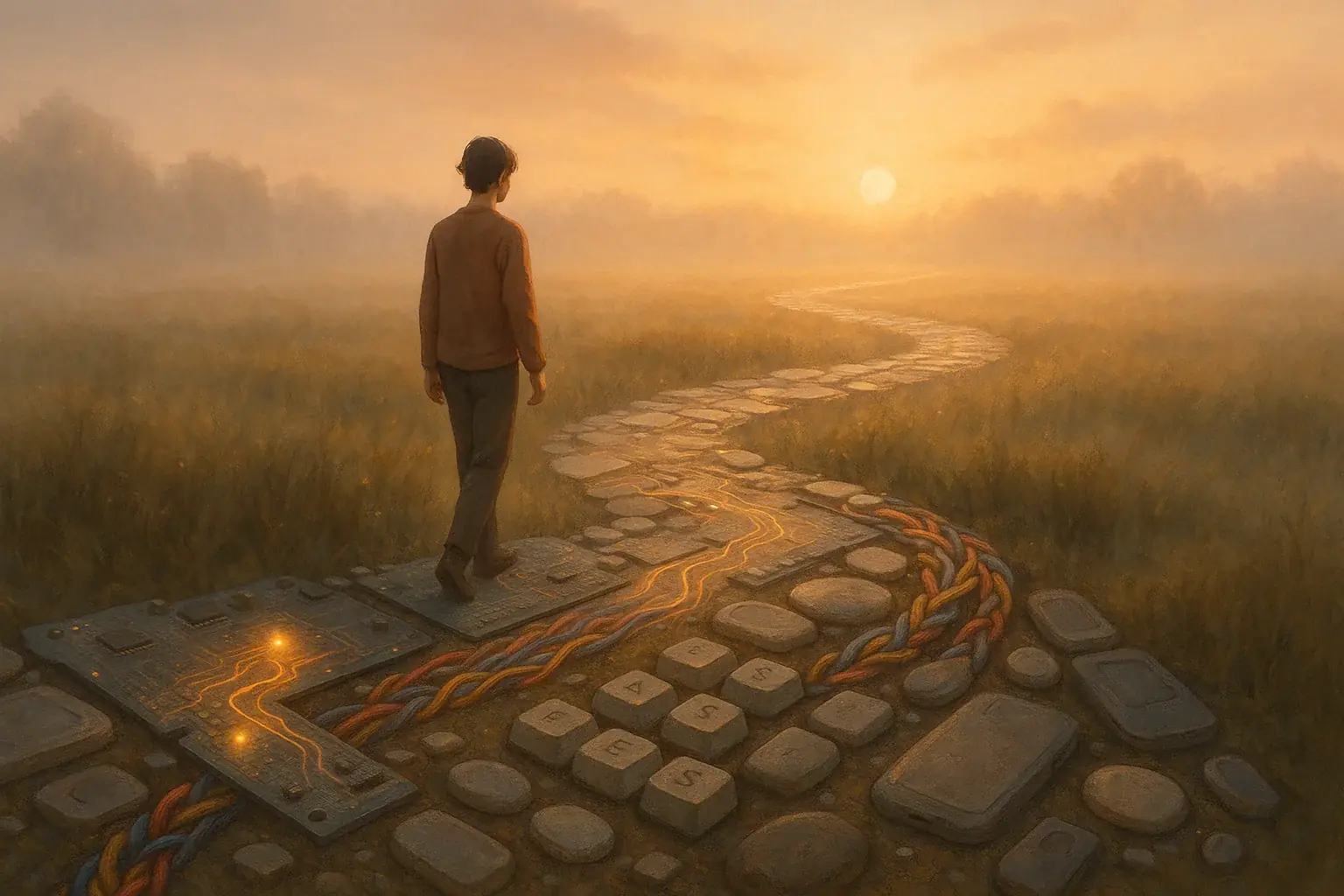
Picture your e-waste art journey less like a sprint. It is more a mindful marathon. Rushing deep emotional work resembles forcing a complex circuit before all connections are secure. This approach fails. Worse, it might short-circuit. True healing needs time. Patience is essential. Our findings from user data confirm slower pacing yields deeper, more sustainable emotional integration.
Listen to your internal signals. These are your guide. Overwhelm, fatigue, or emotional drainage are clear cues. They mean pause. A 15-minute session of focused, mindful creation can be more potent than two hours of forced effort. Short, consistent engagement proves more beneficial than sporadic, intense bursts. This pattern emerges clearly from extensive analysis of therapeutic art journaling.
Avoid chasing dramatic 'aha!' moments. This is a common pitfall we observe. Profound shifts can happen subtly. They occur quietly, in the background. The true magic resides in the consistent, gentle process of showing up. You show up for yourself. You show up for your art. Allow insights to emerge naturally. They are like a circuit slowly, correctly coming to life. The journey itself IS the therapy.
Beyond DIY: Knowing When to Seek Professional E-Waste Art Therapy Guidance

E-waste art offers incredible pathways for self-discovery and healing. Understanding its boundaries is vital. This practice is a powerful self-help tool, not a substitute for professional therapy with complex challenges. We guide your creative journey; however, some emotional peaks demand a seasoned mountain guide.
Persistent distress signals a need for more. An inability to cope or worsening symptoms are clear red flags. Seek help. Feeling 'stuck' in a negative emotional loop or experiencing intense, unmanageable reactions during art-making also indicates professional guidance is wise.
A qualified art therapist offers a safe, confidential, expertly guided space. They help process deep-seated issues, understanding creative expression’s nuances to provide tailored support. Do not hesitate to seek this support. Resources like national art therapy associations can connect you with certified professionals.
Your Inner Compass: Embracing Emotional Safety on Your E-Waste Art Journey
Our user experience data consistently highlights a core truth. Emotional safety is an ongoing practice. It is not a final destination. Think of it: fine-tuning a complex electronic circuit. Constant, mindful adjustment is key. Each piece of e-waste art you create offers a new opportunity. This opportunity lets you understand and nurture your inner landscape. Our findings underscore self-compassion and patience are crucial companions, essential for navigating the emotional terrain of art therapy.
Your journey with e-waste art is uniquely yours. This path, our users find, is filled with incredible potential for healing. Self-discovery too. So, embrace the process. Trust your inner compass; it is your best guide. Remember: every piece of discarded tech holds a story. This insight, drawn from therapeutic art frameworks, mirrors how every emotion holds a message. EwasteTherapy.pro remains your partner, empowering your safe, meaningful, transformative creative exploration.
